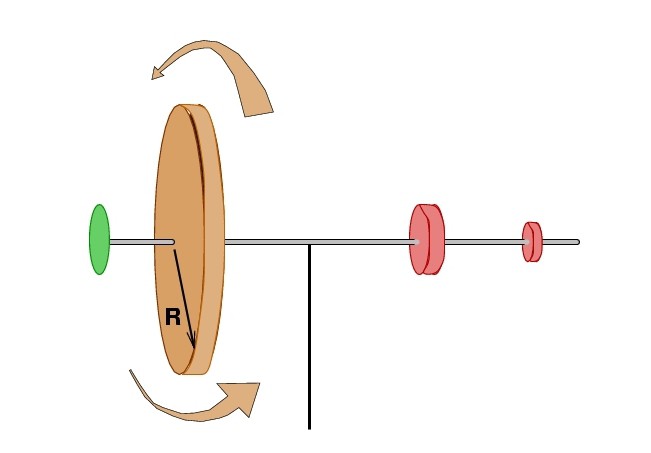The moment of impulse refers to the fundamental, fundamental laws of nature. It is directly related to the symmetry properties of the space of the physical world in which we all live. Thanks to the law of its conservation, the angular momentum defines the physical laws of the movement of material bodies that are familiar to us in space. This quantity is characterized by the amount of translational or rotational motion.
The angular momentum, also called "kinetic", "angular" and "orbital", is an important characteristic that depends on the mass of the material body, the features of its distribution relative to the imaginary axis of revolution and the speed of movement. It should be clarified here that in mechanics rotation has a broader interpretation. Even a rectilinear movement past a point arbitrarily lying in space can be considered rotational, taking it for an imaginary axis.
The moment of impulse and the laws of its conservation were formulated by Rene Descartes with reference to a progressively moving system of material points. True, he did not mention the conservation of motion of the rotational type. Only a century later, Leonard Euler, and then another Swiss scientist, physicist and mathematician Daniil Bernoulli, when studying the rotation of a material system around a fixed central axis, it was concluded that this law also applies to this type of displacement in space.

Further studies fully confirmed that in the absence of external influence, the sum of the product of the mass of all points and the total speed of the system and the distance to the center of rotation remains unchanged. Somewhat later, by the French scientist Patrick Darcy, these terms were expressed in terms of the areas swept by the radius vectors of elementary particles over the same period of time. This made it possible to connect the angular momentum of a material point with some well-known postulates of celestial mechanics and, in particular, with the most important position on the motion of the planets of Johannes Kepler.

The momentum of a rigid body is the third dynamic variable to which the provisions of the fundamental conservation law are applicable. It says that regardless of the nature and type of movement in the absence of external influence, this value in an isolated material system will always remain unchanged. This physical indicator can undergo any changes only if there is a nonzero moment of the acting forces.
It also follows from this law that if M = 0, any change in the distance between the body (the system of material points) and the central axis of rotation will certainly cause an increase or decrease in its velocity around the center. For example, a gymnast performing a somersault to make several revolutions in the air initially rolls her body into a ball. And ballerinas or figure skaters, rotating in a pirouette, spread their arms to the sides if they want to slow down the movement, and, on the contrary, press them to the body when they try to spin at a faster speed. Thus, in sport and art the fundamental laws of nature are used.